Recent Articles
Popular Makes
Body Types
2020 Toyota RAV4 vs. 2020 Honda CR-V

2020 Toyota RAV4 ・ Photo by Brady Holt
When the first Toyota RAV4 and Honda CR-V appeared in the late 1990s, they were quirky little niche vehicles. They were SUVs built from car platforms, providing more comfortable rides and better gas mileage than traditional models like the Jeep Cherokee and Suzuki Sidekick. But while they developed a loyal following, they didn’t take over the heart of the automotive marketplace.
Today, though, the CR-V and RAV4 are two of America’s best-selling vehicles. Each is its own brand’s sales leader, too. Modern compact crossovers are seen as the perfect combination of spaciousness, affordability, and everyday comfort. But which is best? Today, we’ll compare the strengths and weaknesses of the 2020 Toyota RAV4 and the 2020 Honda CR-V and pick a winner.
Pricing and Trim Levels
The 2020 CR-V has a slightly lower base price than the 2020 RAV4. The CR-V’s base LX model starts at $25,150 versus the RAV4 LE’s $25,950. Both base models are well-equipped with lots of advanced features like adaptive cruise control, lane-keeping steering corrections, and automatic emergency braking. But the CR-V LX leaves off Android Auto and Apple CarPlay, sticking with an old-school radio display with no touchscreen interface or advanced smartphone integration. By contrast, the RAV4 includes a fully featured infotainment system as standard equipment.
In another contrast, the Toyota is available in a wider array of trim levels than the Honda. Buyers who like leaving the pavement will appreciate the RAV4’s Adventure and TRD Off Road models. And high-end RAV4s have more features than high-end CR-Vs; Toyota exclusives include a surround-view parking camera, an 11-speaker sound system, rear automatic braking, ventilated front seats, and heated rear seats. Lastly, Toyota provides two years of free scheduled maintenance.
Toyota RAV4
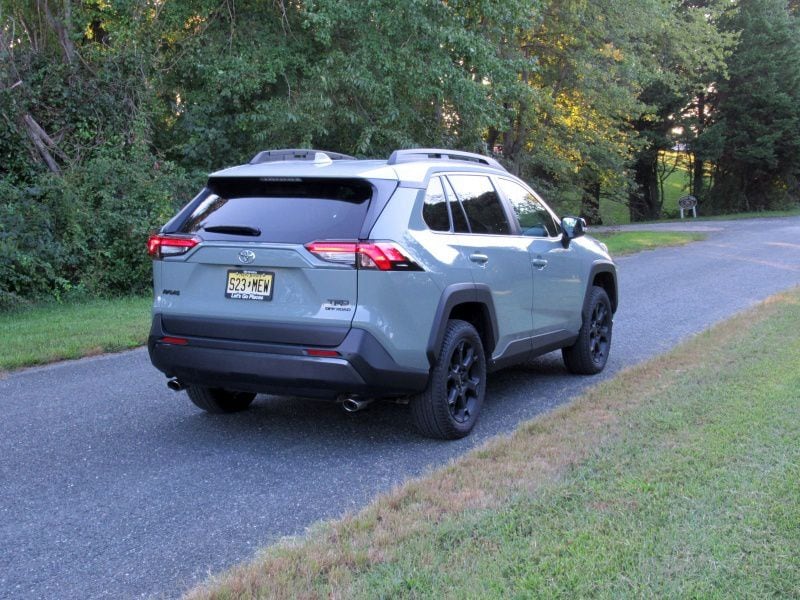
Photo by Brady Holt
Exterior Design
The CR-V and RAV4 take different approaches to exterior design. Since its redesign for the 2019 model year, the RAV4 has focused on providing a more rugged look than the class norm. While most compact crossovers are content to look like tall cars — or sometimes even tall sports cars — the RAV4’s aggressive front end, straight lines, and squared-off fenders shout “truck.” Yet it’s not a hyper-macho vehicle that risks looking silly, either.
The CR-V is a box that’s shaped to maximize interior space, rather than to show off flashy styling or a high ground clearance. Honda dresses up this box with artfully detailed vertical taillights and chrome trim, and its rounded-off front end provides a gentle first impression. The 2020 model year brought revised front-end styling with a bumper that looks both tougher and more expensive than before, but this isn’t an SUV that begs to splash in the mud. We won’t make your aesthetic choice for you.
Tie
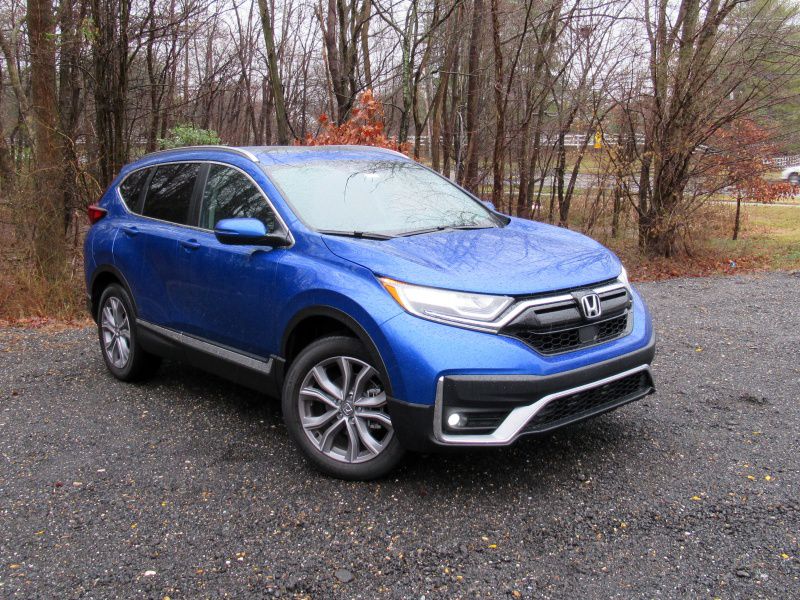
Photo by Brady Holt
Interior Design
Inside, the RAV4 and CR-V have the same aesthetics as their respective exteriors. The CR-V aims to be fancy, with false-wood trim on most trim levels and flush touch-sensitive infotainment controls. A dashboard-mounted gear selector frees up extra console storage, including a reconfigurable open area. The RAV4, meanwhile, is about rugged simplicity, with rubber-lined knobs, user-friendly controls, and a more conventional center console with a little less storage.
While aesthetic tastes will differ again, the RAV4 gets our nod due to better execution. It’s better-built with (in most places) better-feeling materials. Its controls are easier to use. And its infotainment system has a larger optional screen — the CR-V starts at just 5 inches and then upgrades to 7 inches, while the RAV4 starts at 7 inches and offers an 8-inch screen — and is more responsive than the CR-V’s.
Toyota RAV4
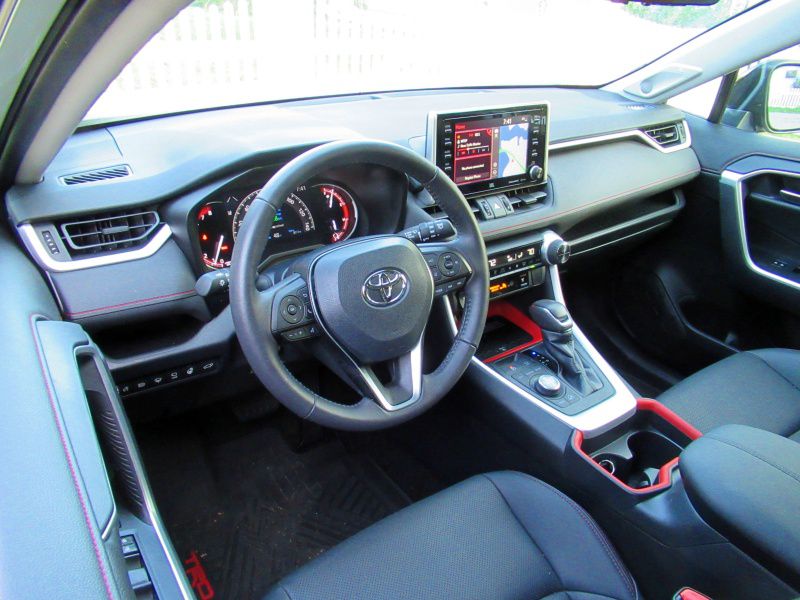
Photo by Brady Holt
Interior Comfort
Both the RAV4 and CR-V have comfortable interiors, with roomy front and rear seats. But while the RAV4 is pretty good, the CR-V is outstanding.
The Honda’s seats, especially in the back, are higher off the floor to provide more thigh support than the RAV4’s. And it has more space, once again with the biggest advantage in the back. The CR-V has more rear legroom, more rear headroom, a higher-mounted seat, and more space for someone to sit in the center-rear position. Even the driver sits a little more comfortably in the Honda than the Toyota, and its advantage grows the more people you put inside the SUV.
Honda CR-V
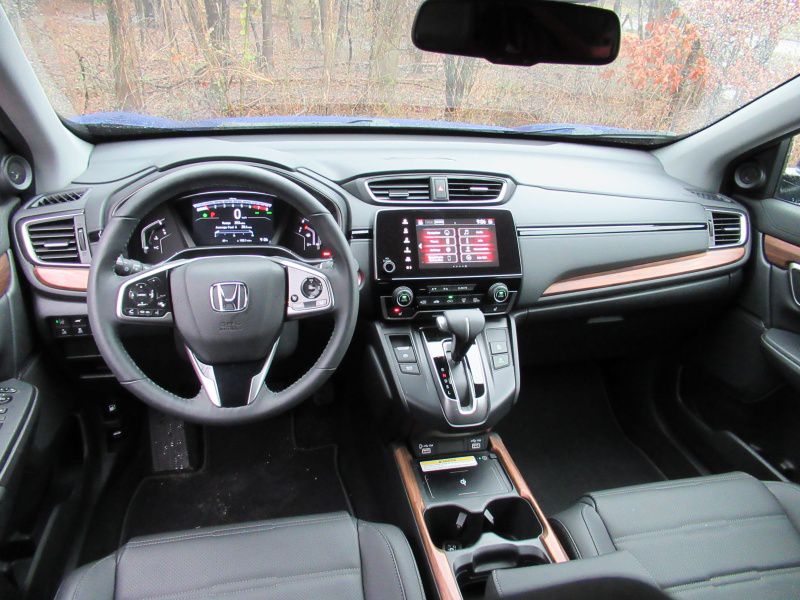
Photo by Brady Holt
Cargo Space
The CR-V is roomier for cargo as well as passengers. It provides a whopping 39.2 cubic feet behind the rear seat, more than some mid-size SUVs, and 75.8 cubic feet with the rear seat folded down. The RAV4 comes close with all seats in place, with 37.6 cubic feet. But folding the Toyota’s rear seat opens up a more modest 69.8 cubic feet. The CR-V also has an unusually low cargo floor that makes it easy to load and unload bulky items.
Toyota does have an advantage if you tow a trailer, though, as long as you opt for its Adventure or TRD Off Road trim levels. They can pull up to 3,500 pounds, excellent for a compact crossover. Other RAV4 models, like all CR-Vs, can tow 1,500 pounds.
Honda CR-V
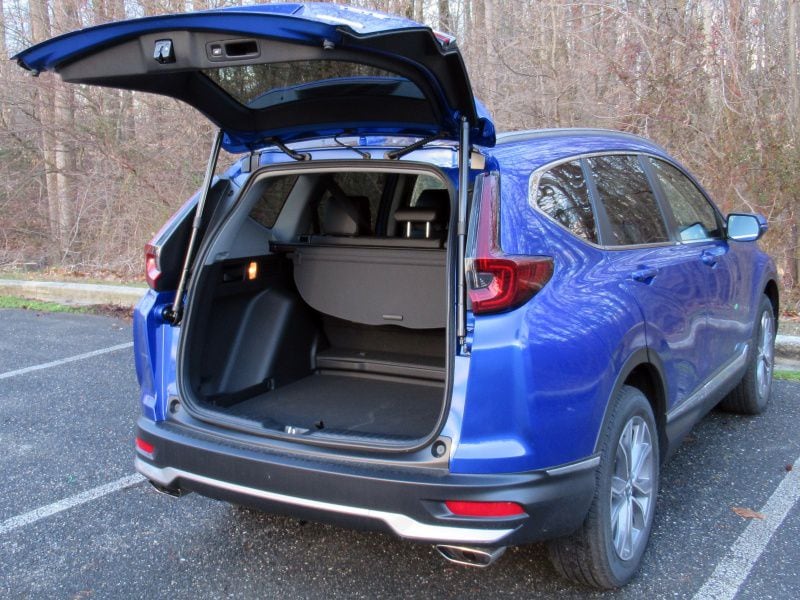
Photo by Brady Holt
Driving Experience
The current-generation RAV4 is nicer to drive than its predecessor. Its handling is more agile, its steering is more responsive, and its engine has more power. And it rides comfortably even in the off-road-ready TRD trim level. But one particular downside holds it back: That 2.5-liter, 203-horsepower engine is quiet only when driven gently, and it screams and roars harshly if you try to accelerate harder. That makes the RAV4 feel underpowered, despite having more horsepower than most competitors.
The CR-V’s engine is a little 1.5-liter turbo that makes 190 horsepower. It’s not magical either, but it’s significantly quieter and smoother-sounding than the RAV4’s. The CR-V also has livelier, more alert steering and handling than the already-decent RAV4. This isn’t exactly a sporting machine, but it’s consistently more agreeable than the RAV4.
Honda CR-V
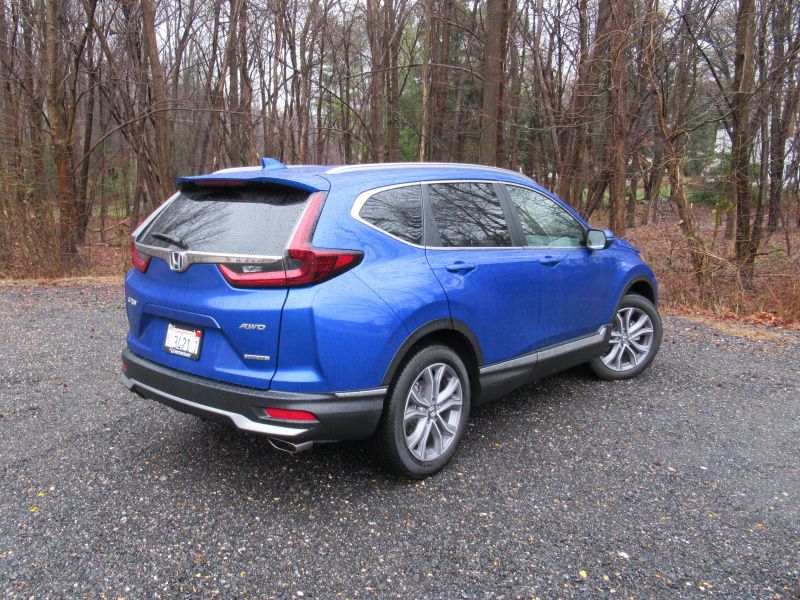
Photo by Brady Holt
Fuel Economy
The CR-V and RAV4 both get among the best gas mileage of any gasoline-powered crossover. Most of their trim levels achieve EPA estimates for 30 mpg in mixed driving with front-wheel drive and 29 mpg with all-wheel drive. But the two SUVs achieve their mileage in different ways: The RAV4 has a traditional naturally aspirated engine and eight-speed automatic transmission, while the CR-V has a small-displacement turbocharged engine and a continuously variable automatic transmission (CVT).
We’ll give the RAV4 the edge in this category for two reasons. First, if you upgrade to the RAV4’s available hybrid powertrain, it tops the CR-V with an EPA-estimated 40 mpg versus the Honda’s 38 mpg. Moreover, we beat the EPA estimates in two tests of the current-generation RAV4, while we only matched them in the CR-V.
Toyota RAV4
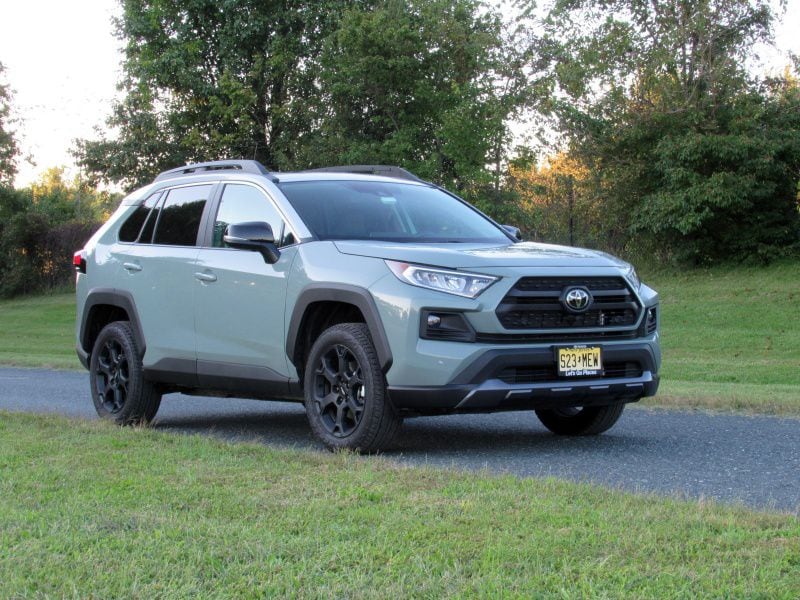
Photo by Brady Holt
Safety
Both the CR-V and RAV4 earn excellent crash-test scores and have generous standard safety equipment: a forward-collision warning with automatic emergency braking and pedestrian-detection capability, lane-keep assist with a lane-departure warning, and automatic high beams.
These SUVs are both among the Insurance Institute for Highway Safety’s Top Safety Picks and earned top five-star overall safety ratings from the National Highway Traffic Safety Administration. We’ll give the CR-V the edge because it also earned five stars for frontal-impact protection from NHTSA, while the RAV4 earned four stars.
Honda CR-V

Photo by Brady Holt
Final Thoughts
With more adventurous-looking styling inside and out, accompanied with superior off-road capabilities and an optional higher towing limit, the 2020 Toyota RAV4 is the better SUV than the 2020 Honda CR-V.
But the compact crossover segment has become America’s default car, not merely its default SUV. And for everyday use as a car, the CR-V’s advantages are more broadly appealing. It has more room, it’s more enjoyable to drive, and its engine is quieter. The RAV4 isn’t terrible in any of those areas either, to be clear. And Honda should overhaul the CR-V’s infotainment system and add a few more optional features. But overall, we find the CR-V to be the better-rounded compact crossover.
Honda CR-V
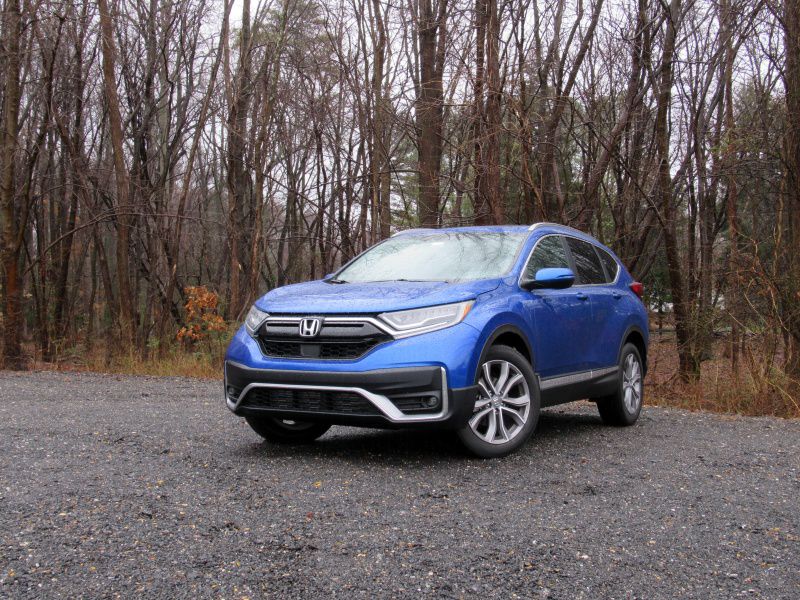
Photo by Brady Holt